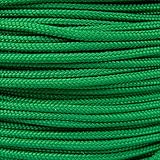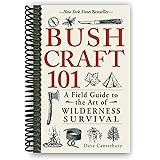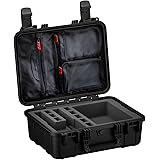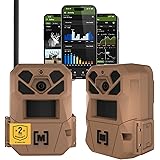While the video above offers a rather unconventional take on emergency preparedness in an arid environment, the reality of desert survival is a serious and profoundly challenging endeavor. Effective strategies for desert survival are not merely about improvisation with inappropriate items; rather, they demand meticulous preparation, a deep understanding of the environment, and the application of proven techniques. In regions characterized by extreme temperatures, scarce water resources, and vast, often featureless landscapes, survival is predicated on specific knowledge and the right equipment.
Mastering Desert Survival: Essential Strategies for Arid Environments
The harshness of desert ecosystems cannot be overstated; they represent some of the most unforgiving environments on Earth. Understanding the unique challenges presented by these arid lands is the first critical step toward effective desert survival. Intense solar radiation, rapid temperature fluctuations, and critically low humidity levels dictate that immediate and informed decisions must be made to sustain life. Preparation and accurate knowledge are paramount for anyone venturing into such areas, where errors in judgment can quickly escalate into life-threatening situations.
Prioritizing Water: The Cornerstone of Desert Survival
The most immediate threat in a desert environment is almost always dehydration. A human body’s water reserves are rapidly depleted through perspiration in high heat, necessitating aggressive water conservation and, if possible, procurement. Without water, physiological functions begin to fail within a matter of hours or days, depending on ambient temperature and exertion levels. Thus, all actions and decisions in a desert survival scenario should primarily be oriented around water.
Water Procurement Strategies
When existing water supplies are exhausted or absent, various methods for obtaining water must be employed. A fundamental technique involves the use of solar stills, which can condense moisture from the ground or vegetation through evaporation. Furthermore, an understanding of local topography may lead to finding natural catchments or even digging for subsurface water in dry riverbeds, where water might be present just below the surface. Knowledge of desert flora can also prove invaluable, as certain plants, such as barrel cacti, can be processed to extract limited amounts of potable liquid; however, this should be attempted only by those with precise botanical identification skills to avoid toxic species.
Effective Water Conservation
Beyond procurement, the conservation of water is equally critical for desert survival. Physical exertion, which accelerates perspiration, must be minimized, particularly during the hottest parts of the day. Travel is often best undertaken during cooler periods, such as dawn, dusk, or even at night, when temperatures are significantly lower. Clothing choices also play a vital role; loose-fitting, light-colored garments are often worn to reflect solar radiation and allow for air circulation, thereby reducing the rate of water loss through evaporation. Shelter should be utilized to provide shade, further reducing the body’s need to cool itself by sweating. Moreover, consumption of any food should be carefully considered, as digestion itself requires water.
Shelter and Thermoregulation in Arid Lands
Protection from the elements is another critical aspect of desert survival, encompassing both extreme heat during the day and often surprisingly cold temperatures at night. Without adequate shelter, the body’s ability to maintain a stable core temperature — a process known as thermoregulation — is severely compromised. Hyperthermia, caused by excessive heat, and hypothermia, due to cold exposure, both represent grave dangers in the desert.
Constructing Improvised Shelter
The primary purpose of a desert shelter is to provide shade and reduce exposure to direct sunlight. A simple lean-to, constructed from available natural materials such as branches, rocks, or even a piece of cloth from a discarded tarp, can dramatically lower the ambient temperature around an individual. The shelter should be positioned to maximize shade throughout the day, and it is often advisable to create an elevated sleeping area to avoid direct contact with the hot ground during the day, or conversely, to trap ground warmth at night. Digging a shallow trench for a body to lie in, then covering it with material, can also be used to insulate against both heat and cold.
Mitigating Solar Radiation and Heat
Direct exposure to the sun’s ultraviolet (UV) radiation must be avoided whenever possible. This means utilizing not only constructed shelters but also natural features like canyons, large boulders, or dense vegetation. A wide-brimmed hat is an indispensable item for desert travel, as are sunglasses and sunscreen, which protect against sunburn and eye damage. Loose, breathable clothing, preferably in light colors, is often worn to minimize heat absorption. Additionally, wetting clothing can provide a temporary cooling effect through evaporative cooling, though this must be balanced against water conservation efforts.
Essential Gear for Desert Expeditions
While the video comically highlights useless items, a well-stocked and thoughtfully assembled desert survival kit is a non-negotiable requirement for anyone entering these environments. The contents of this kit are designed to support critical survival needs until rescue can be effected.
The Core Desert Survival Kit
Key items often included in an expert desert survival kit typically feature a sturdy fixed-blade knife, which can be utilized for various tasks from shelter building to food preparation. A reliable compass and topographical maps of the area are indispensable for navigation, especially given the often-featureless terrain. Signalling mirrors and whistles are crucial for attracting attention from search and rescue teams. Furthermore, a robust water filter or purification tablets are necessary to render found water sources potable. High-energy, non-perishable food items, a first-aid kit, and a Mylar emergency blanket for thermal regulation are also considered standard components.
Navigation and Signaling Essentials
Accurate navigation in the desert is challenging due to the lack of distinct landmarks. Therefore, proficiency in map and compass use, along with a GPS device and knowledge of celestial navigation (sun and stars), is paramount. Signaling devices such as mirrors, flares, and brightly colored fabric are not merely secondary considerations; they are often the most effective means by which a lost individual can communicate their distress. The principle of the signal mirror, for instance, allows for visible signals to be transmitted over many miles, significantly increasing the chances of detection by aerial search parties. Understanding distress signals, such as three fires in a triangle or three blasts of a whistle, can expedite rescue efforts.
Dealing with Wildlife and Other Hazards
The desert is home to a variety of creatures, some of which can pose threats. Understanding local fauna and their behaviors is crucial. Venomous snakes, scorpions, and spiders are common inhabitants, necessitating vigilance and appropriate footwear. Shaking out boots and clothing before putting them on can prevent unwelcome surprises. Large predators, while less common, may also be encountered, making awareness of surroundings important. Furthermore, flash floods in washes and canyons, even in seemingly dry conditions, represent a significant danger, especially during monsoon seasons, and should always be considered. Quicksand, though often exaggerated in media, can also be a localized hazard in certain desert areas.
Mental Fortitude: The Unseen Survival Tool
Beyond the tangible tools and physical techniques, the psychological aspect of desert survival is frequently underscored by experts. A positive mental attitude, resilience, and the ability to maintain composure under extreme stress are often as vital as water or shelter. Panic can lead to irrational decisions, excessive exertion, and a rapid depletion of resources. Maintaining a proactive mindset, focusing on immediate tasks, and conserving energy are mental strategies that contribute significantly to a successful outcome. The will to survive, combined with sound knowledge of desert survival, creates a formidable defense against the elements.











